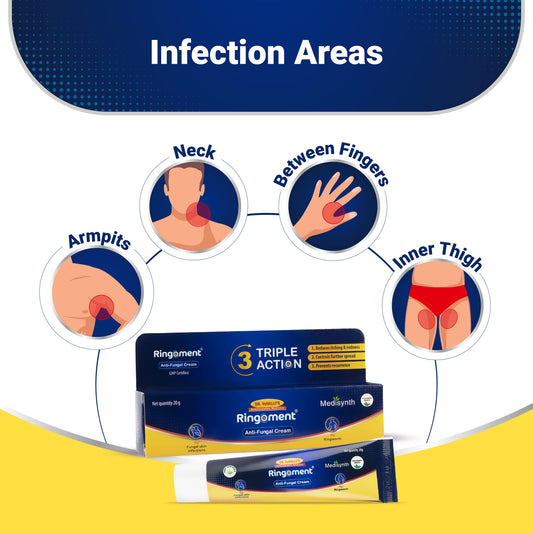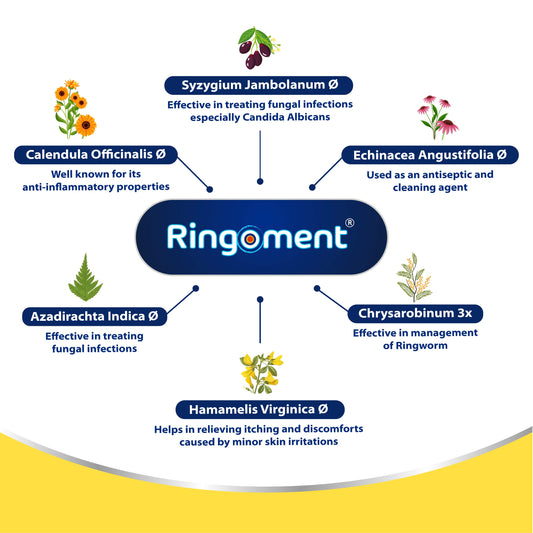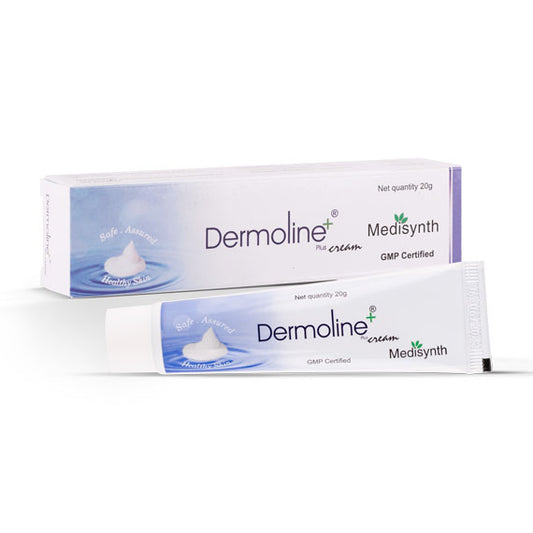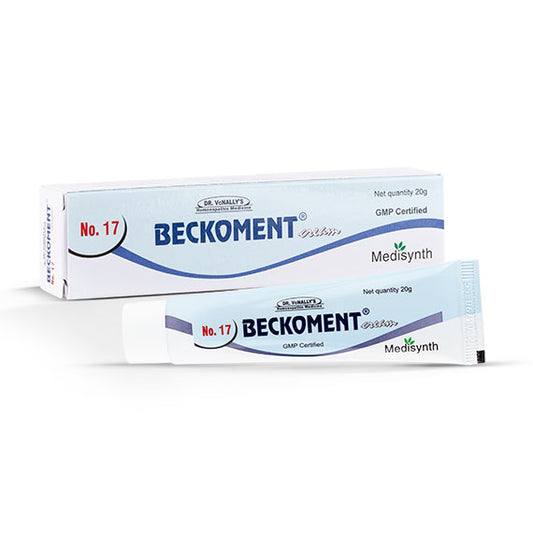How to Prevent Fungal Infections During the Monsoon: Expert Tips

The monsoon brings relief from the summer heat but also increases the risk of skin infections due to prolonged humidity and damp conditions. One of the most common concerns during this season is fungal infection, particularly ringworm. Understanding how to prevent it, especially through holistic approaches like homeopathy, is essential. In this guide, we explore how ringworm homoeopathic medicine and proper hygiene can help keep your skin healthy during the rainy months.
Why Fungal Infections Spread During Monsoon
Fungi thrive in warm, moist environments. During the monsoon, moisture gets trapped in clothing, shoes, and skin folds, especially when people spend long hours in wet clothes or fail to dry themselves properly. This allows fungal spores to grow and spread. When the skin remains damp, its protective barrier weakens, making it more vulnerable to external infections.
The most commonly affected areas include the feet, groin, underarms, neck, and spaces between the toes. People with poor hygiene, low immunity, or pre-existing skin issues are more susceptible.
How Homoeopathy Addresses Fungal Infections
Homoeopathy works on the principle of stimulating the body's natural healing response. Rather than suppressing symptoms, it focuses on enhancing the immune system’s ability to fight infections from within. This makes it a valuable option for managing fungal issues during the monsoon.
Using homoeopathic medicine for fungal infection helps manage symptoms like itching, redness, scaling, and skin irritation in a gentle and non-invasive way. More importantly, homoeopathy looks at the root cause of the problem and offers individualized treatment, which may reduce the recurrence of infections in the long run.
Key Precautions for Fungal Infection During the Monsoon
In addition to homoeopathic care, it is crucial to follow certain lifestyle and hygiene measures. These precautions for fungal infection help break the cycle of moisture retention and fungal growth.
1. Keep Your Skin Dry and Clean
Always dry your body thoroughly after bathing or getting wet in the rain. Pay special attention to skin folds, feet, and areas that are usually covered. Avoid rubbing the skin too harshly, and instead pat gently using a clean towel.
2. Choose Breathable Fabrics
Wear cotton and loose-fitting clothes that allow air circulation. Synthetic fabrics trap sweat and moisture, which creates an ideal environment for fungal growth. Changing clothes and undergarments at least twice a day can help reduce the risk.
3. Practice Good Foot Care
One of the most overlooked problems is foot infection in rainy season treatment. Avoid wearing damp socks or shoes. Let footwear dry completely before reuse. Keep feet dry, especially between the toes. Avoid walking barefoot in wet public areas like gyms or communal showers.
4. Avoid Sharing Personal Items
Do not share towels, clothes, footwear, or grooming tools. Fungal spores can transfer easily from one person to another through contaminated items, even if the infection is not visibly active.
5. Clean and Sun-Dry Clothes and Shoes
Fungi can linger on damp clothes. Always wash and dry clothes thoroughly in sunlight, if possible. The sun’s natural heat helps eliminate microbial contamination. For shoes, use paper or cloth inserts to absorb excess moisture and leave them in a well-ventilated area.
6. Maintain Proper Indoor Hygiene
A humid home environment can increase the risk of skin infections. Use a dehumidifier or keep windows open for ventilation. Disinfect bathroom floors and frequently used surfaces with natural antifungal agents like diluted vinegar or herbal solutions.
7. Strengthen Your Immune System
The body’s resistance plays a major role in managing fungal infections. A well-functioning immune system can prevent infections from recurring. Eat a balanced diet rich in seasonal fruits, vegetables, and natural probiotics. Drink enough water to stay hydrated and flush out toxins. Rest and proper sleep are also essential for immunity.
Importance of Early Homoeopathic Intervention
When it comes to fungal infection homoeopathic medicine, the sooner the symptoms are addressed, the better the outcomes. Early signs of fungal infection may include:
-
Red or scaly patches
-
Persistent itching
-
Peeling skin, especially between toes
-
Discoloration or thickening of nails
-
Damp odor from affected areas
If treated early with the right homeopathic approach, many fungal conditions can be controlled effectively without requiring aggressive chemical applications. It also helps reduce the risk of recurrence, which is especially common in tropical climates.
Best Homeopathic Remedies to prevent Fungal Infections during the Monsoon
1. Syzygium Jambolanum
-
This remedy is widely used in homeopathy for managing blood sugar levels, particularly in diabetic individuals who are more prone to fungal infections.
-
It helps reduce itching, redness, and skin ulcerations caused by diabetes.
-
Syzygium is especially useful when fungal infections occur in diabetic patients.
2. Calendula Officinalis
-
Known as the “homoeopathic antiseptic,” Calendula is invaluable in treating minor cuts, abrasions, and moist skin lesions that may get infected in humid conditions.
-
It supports rapid wound healing and prevents secondary fungal or bacterial infections.
-
When applied externally in dilution, it also helps soothe itchy and inflamed skin caused by fungal exposure.
3. Hamamelis Virginica
-
Hamamelis, or witch hazel, is known for its astringent and anti-inflammatory properties.
-
It helps in managing swollen, congested, or bruised skin tissues that may serve as entry points for fungal infection.
-
During monsoon, when skin is frequently macerated due to moisture, Hamamelis can help tone the skin and prevent fungal colonization.
4. Echinacea Angustifolia
-
Echinacea is one of the most important remedies for immune support in homeopathy.
-
It helps the body resist fungal and microbial infections by boosting the immune response.
-
It is particularly useful for individuals who suffer from recurring skin infections during rainy seasons and may have lowered natural defenses.
5. Azadirachta Indica
-
Commonly known as Neem, this remedy is a natural antifungal and antibacterial agent in traditional and homeopathic medicine.
-
Azadirachta is useful in skin diseases, particularly in itching without eruptions.
6. Chrysarobinum
-
Effective for stubborn fungal and parasitic skin conditions, Chrysarobinum is specifically used in homeopathy for chronic skin diseases marked by crusty, scaly eruptions and fungal-like symptoms.
-
It helps reduce thickened, dry, and inflamed skin patches, especially those that do not respond to initial treatment.
-
It is particularly useful in deep-seated, resistant fungal infections that occur during periods of high humidity.
Best Homeopathic Medicine to prevent Fungal Infections during the Monsoon
Ringoment Anti-Fungal Cream
You must have already tried dozens of creams that claim to be “anti-fungal” but don’t work at all but that is not the case with Medisynth’s Ringoment Anti-Fungal Cream which is why we recommend it to you with full confidence.
Medisynth’s Ringoment Anti-Fungal Cream is a homeopathic topical formulation designed to address various fungal skin infections, particularly prevalent during the monsoon season. The high humidity and damp conditions characteristic of this period create an environment conducive to fungal growth, making effective prevention and treatment essential.
Medisynth’s Ringoment Anti-Fungal Cream is formulated to soothe skin irritation, reducing itching and inflammation commonly associated with fungal infections. It helps control the progression of the infection, limiting its spread to unaffected areas.
Medisynth’s Ringoment Anti-Fungal Cream is made using all the natural ingredients such as Syzygium Jambolanum, Calendula Officinalis, Hamamelis Virginica, Echinacea Angustifolia, Azadirachta Indica & Chrysarobinum. All of these ingredients are totally natural as mentioned in the above section with all their benefits for the treatment of fungal infection as well.
Conclusion
Fungal infections, especially ringworm, become increasingly common during the monsoon due to persistent moisture, limited ventilation, and prolonged skin dampness. While conventional antifungal treatments can provide temporary relief, many individuals are now turning to gentler, long-term approaches that align with the body's natural healing process. This is where homeopathy proves especially valuable.
Natural homeopathic ingredients such as Syzygium jambolanum, Azadirachta indica, Echinacea angustifolia, and Calendula officinalis not only support the body’s defense against fungal infections but also help restore the skin’s integrity without harsh side effects. These ingredients aid in detoxification, immunity enhancement, and relief from symptoms like redness, itching, and scaling.
Obviously, due to our busy schedules, it is not possible to practice using Homoeopathic ingredients mentioned above in our daily lives which is why we recommend using Medisynth’s Ringoment Anti-Fungal Cream which offers effective on-the-spot treatment and contains all of the ingredients mentioned above. With a formulation rooted in homoeopathic principles, Ringoment helps soothe irritated skin, limits the spread of infection, and promotes healthy skin recovery. Its natural profile makes it suitable for continued use throughout the monsoon without the risk of skin thinning or chemical buildup.
Also keep in mind that you should focus on essential hygiene practices as well which are mentioned above along with usage of Medisynth’s Ringoment Anti-Fungal Cream to significantly reduce the risk of fungal infections during the rainy season.
References:
-
Antibacterial and antifungal activity of Syzygium jambolanum seeds
-
Disruption of fungal cell wall by antifungal Echinacea extracts
-
ANTIFUNGAL ACTIVITIES OF SEED OIL OF NEEM (Azadirachta indica A. Juss.)








